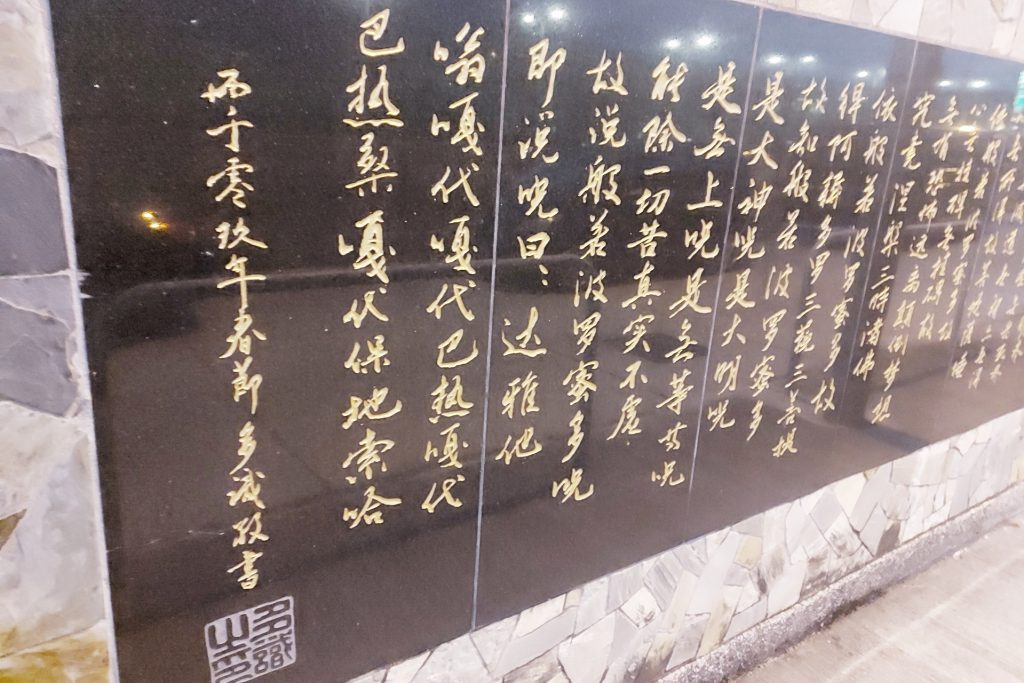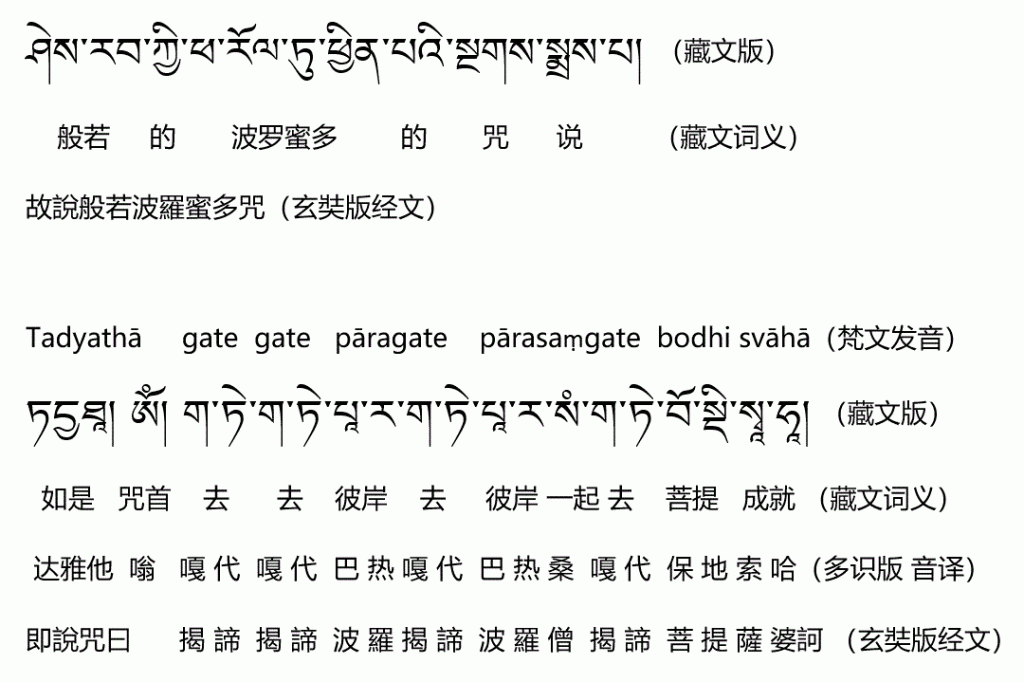Original link: https://blog.fivest.one/archives/6307
At the entrance of a certain village in Hong Kong, I saw the “Heart Sutra” engraved on the wall, and suddenly discovered that the last mantra was not the usual “Uncovering the Truth and Uncovering the Truth”, but another passage:
So say the Prajna Paramita mantra, that is, to say the curse Daya Ta Om Ga Dai Bharega Debha Resanga Debaodi Soha


The most widely circulated Chinese version of “Heart Sutra” must be Tang Xuanzang’s translation :
So sayPrajna ParamitaThat is to say, cursing: uncovering and uncovering, Boluo reveals, Boluo reveals, Bodhisattva.
There have been more than a dozen versions in the past, such as Kumarajiva , Fayue, Facheng, the retranslation of the Japanese Tripitaka, the retranslation of Tibetan in the Qing Dynasty, and the transliteration of the Sanskrit version of the modern Dunhuang posthumous writings…the impression is not the text engraved by the village entrance . Moreover, the part in front of the stone carving at the entrance of the village is exactly the same as the Xuanzang version. So… I thought at first that it was the Cantonese pronunciation of the Heart Sutra mantra, but it is not the case.
Most of the results of Google search mentioned “Duozhi Rinpoche”, which is the “Duozhi” inscribed at the entrance of the village. I’m not 100% sure, but probably he is the one who started the new version of the village entrance. The man is probably still alive.
Duoshi Rinpoche (1936 – ), whose real name is Duoshi Luosang Tudenqiongpai, is the sixth reincarnated living Buddha of Tiantang Temple in Amdo Huarui Tibetan area, professor and doctoral supervisor of the College of Tibetan Language and Culture, Northwest University for Nationalities, and enjoys the special status of the State Council. Allowance Specialist. Concurrently serving as a visiting professor at Tibet University and other social positions. The representative work “Wisdom Exploded in Love”…
The version at the entrance of the village is obviously a transliteration from the Tibetan version – just look at the word “嗡”. The pronunciation of the Tibetan version of “Heart Sutra” is very similar to that of the Sanskrit version, but “ཨོཾ” is often added to indicate the beginning of the mantra.
ཤེས་རབ་ཀྱི་ཕ་རོལ་ཏུ་ཕྱིན་པའི་སྔགས་སྨྲས་པ།
ཨོ ཨོ ཾ ། ། ག་ ཏེ་ ག་ པཱ་ ར་ ཏེ་ པཱ་ ར་ སཾ་ ག་ ཏེ་ བོ་ སྡི་ ཧཱ ། ། ། །
 This “Gadai Gadai” does sound more like the original pronunciation of Tibetan and Sanskrit than “Jiedi Jiedi”. ——The pronunciation of the Chinese characters “Jie Di” has changed a lot from the Tang Dynasty to the present. Therefore, there seem to be many people who study Buddhism in modern Chinese circles. They transliterate Tibetan and Sanskrit scriptures into closer Chinese characters, so that they can be more “fundamental” when chanting scriptures; there are also more hardcore people who study Tibetan, Chanting scriptures directly in Tibetan. However, the Chinese versions of the Heart Sutra in the past dynasties, except for the last mantra, are all free translations rather than transliterations; so if you read the Tibetan version directly, the first part is completely different from the Chinese version. It is the first time I have seen the village entrance version, which uses the old Xuanzang version to put new wine in an old bottle, followed by mantras pronounced in Tibetan.
This “Gadai Gadai” does sound more like the original pronunciation of Tibetan and Sanskrit than “Jiedi Jiedi”. ——The pronunciation of the Chinese characters “Jie Di” has changed a lot from the Tang Dynasty to the present. Therefore, there seem to be many people who study Buddhism in modern Chinese circles. They transliterate Tibetan and Sanskrit scriptures into closer Chinese characters, so that they can be more “fundamental” when chanting scriptures; there are also more hardcore people who study Tibetan, Chanting scriptures directly in Tibetan. However, the Chinese versions of the Heart Sutra in the past dynasties, except for the last mantra, are all free translations rather than transliterations; so if you read the Tibetan version directly, the first part is completely different from the Chinese version. It is the first time I have seen the village entrance version, which uses the old Xuanzang version to put new wine in an old bottle, followed by mantras pronounced in Tibetan.
But the biggest problem with this version is: the meaning of “Dayata” in Tibetan originally corresponds to the Chinese version of “That is to say mantra.” So in this version, “that is to say the mantra Daya Ta Om Gadai…” is to repeat the “that is to say the mantra” twice (shake your head~
Well, that’s it for now. I’m not from the Buddhist circle, so I don’t know the ins and outs of this version, and how much knowledgeable Rinpoche has influenced it. It’s just that I was baffled after seeing the stone carvings at the entrance of the village, and I couldn’t google a clear answer. In case others see this thing, they are also confused, so I will explain it here. Anyone who has more detailed information is welcome to leave a message to add.
This article is transferred from: https://blog.fivest.one/archives/6307
This site is only for collection, and the copyright belongs to the original author.